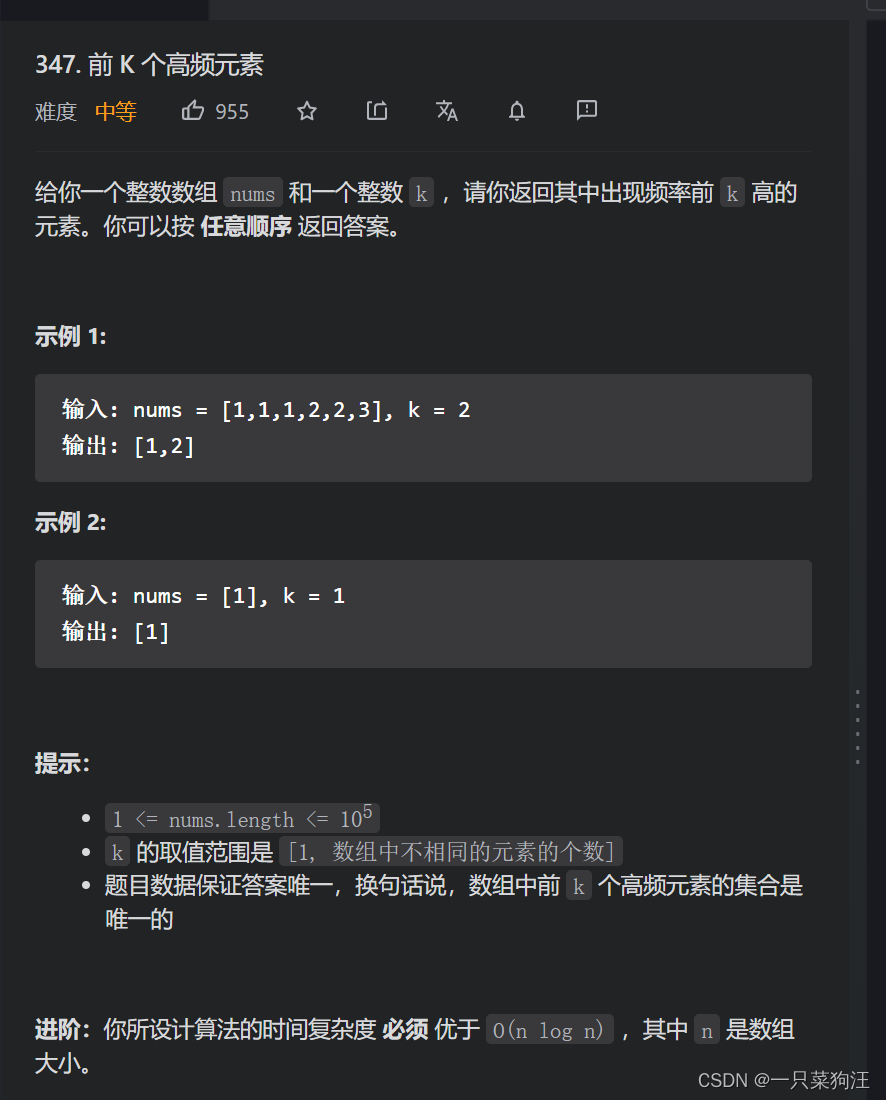优先队列实际上是堆
根节点的值比所有节点值都大,称为最大堆;
根节点的值比所有节点值都小,称为最小堆;
基本操作:
- top 访问队头元素
- empty 队列是否为空
- size 返回队列内元素个数
- push 插入元素到队尾 (并排序)
- emplace 原地构造一个元素并插入队列
- pop 弹出队头元素
- swap 交换内容
第一种用法:
priority_queue<int> q1;//默认从大到小排序,整数中元素大的优先级高 第二种用法:
//升序队列 大顶堆
priority_queue <int,vector<int>,greater<int> > q;
//降序队列 小顶堆
priority_queue <int,vector<int>,less<int> >q;
//greater和less是std实现的两个仿函数(就是使一个类的使用看上去像一个函数。其实现就是类中实现一个operator(),这个类就有了类似函数的行为,就是一个仿函数类了)
第三种用法自定义:
struct cmp{
bool operator()(pair<int,int> m , pair<int,int>n){
return m.second > n.second;
}
};
class Solution {
public:
vector<int> topKFrequent(vector<int>& nums, int k) {
priority_queue<pair<int,int>,vector<pair<int,int>>,cmp> q;
}
};简单例题:347. 前 K 个高频元素 - 力扣(LeetCode) (leetcode-cn.com)
?
基本思想:
? ? ? ? 维护一个小顶堆,如果size() < k 则进入,如果size() == k 时,当堆顶小于当前次数大小,则弹出队头,该次数入队
struct cmp{
bool operator()(pair<int,int> m , pair<int,int>n){
return m.second > n.second;
}
};
class Solution {
public:
vector<int> topKFrequent(vector<int>& nums, int k) {
int n = nums.size() , x = 0;
if(n == 1) return nums;
unordered_map<int,int>map;
for(auto x : nums)map[x]++;
priority_queue<pair<int,int>,vector<pair<int,int>>,cmp> q;
for(auto &[num,count] : map){
if(q.size() == k){
if(q.top().second < count){
q.pop();
q.push({num , count});
}
} else{
q.push({num , count});
}
}
vector<int>res;
while (!q.empty()){
res.emplace_back(q.top().first);
q.pop();
}
return res;
}
};?